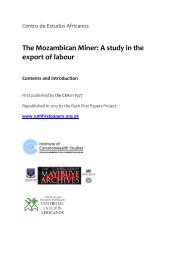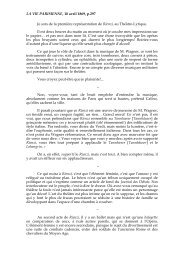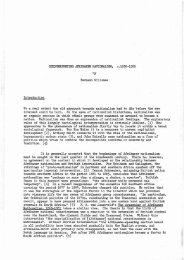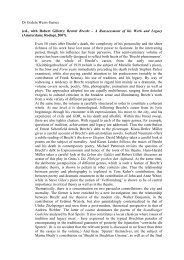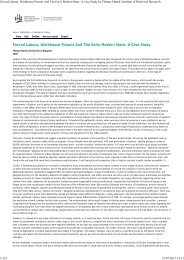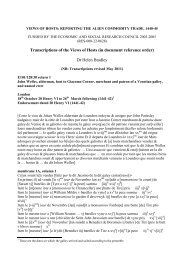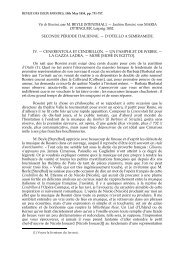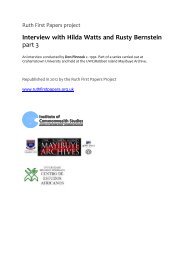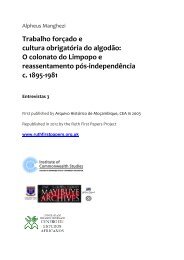Roraima: Brazil's northernmost frontier by John Hemming - SAS-Space
Roraima: Brazil's northernmost frontier by John Hemming - SAS-Space
Roraima: Brazil's northernmost frontier by John Hemming - SAS-Space
Create successful ePaper yourself
Turn your PDF publications into a flip-book with our unique Google optimized e-Paper software.
Indians<br />
<strong>Roraima</strong>'s Indian population divides into forest-dwelling tribes that have<br />
had little contact, and savanna tribes that are now highly acculturated and<br />
almost assimilated into <strong>frontier</strong> society. The latter are the Makuxi, Wapixana<br />
and related Carib- and Aruak-speaking groups. The population of these<br />
semi-acculturated Indians has increased dramatically during recent decades,<br />
keeping pace with the growth of <strong>Roraima</strong>'s total population.<br />
In 1913 the native population of Rio Branco (<strong>Roraima</strong>) was estimated at<br />
between three and five thousand. That estimate was presumably only for<br />
savanna tribes, since there was then almost no contact with Yanomami or<br />
other forest tribes. In 1944 Myers reckoned that there were little more than<br />
a thousand Makuxi in Brazil. In the 1950s Darcy Ribeiro and Dale Kietzman<br />
guessed that there were 1,500-2,000 Makuxi in Brazil, plus 1,000 or 1,500<br />
related Taurepang and the same number of Wapixana in Brazil. Thus, they<br />
reckoned 6,000 savanna Indians at most. By the 1970s, Edson Diniz and<br />
Ernesto Migliazza each calculated that <strong>Roraima</strong>'s Makuxi had doubled, to<br />
3,000. But in the 35 years to 1986 the Indian population had possibly tripled.<br />
Emanuele Amodio and Vicente Pira, anthropologists with an intimate knowledge<br />
of the region's plains Indians, now estimate that the new state contains<br />
12,000 Makuxi, 550Taurepang (Pemon), 5,000 Wapixana and 500 Ingariko:<br />
a total of over 18,000 for these tribes. The Indian service FUNAI claimed<br />
that 40% of <strong>Roraima</strong>'s population is Indian - a higher proportion than in any<br />
other part of Brazil.<br />
An authoritative and detailed census of Indian lands published in 1987 <strong>by</strong><br />
the ecumenical research centre CEDI confirmed the population explosion.<br />
It listed a total of 15,395 people of these four tribes living in reserves 66 - and<br />
it is known that many Indians now live outside tribal lands, particularly<br />
around Boa Vista.<br />
There are various explanations for this increase. One may simply be that<br />
the modern counts are more accurate than earlier guesses. More importantly,<br />
Catholic and Protestant missionaries have been very active among<br />
these acculturated tribes, breaking down tribal customs, encouraging them<br />
to emulate settlers <strong>by</strong> having large families, and providing health and particularly<br />
natal care. Indians from these tribes also use the hospitals in Boa<br />
Vista and the rural health programmes provided <strong>by</strong> the government. After<br />
two centuries of contact, the Makuxi and Wapixana have developed some<br />
immunity to imported diseases that devastate newly-contacted tribes.<br />
FUNAI has increased its presence in <strong>Roraima</strong> and, together with the missionaries,<br />
has given some protection to native lands that were being engulfed<br />
<strong>by</strong> cattle ranching. This has improved the feeling of security of protected<br />
groups: their stability has resulted in population growth, from a higher birth<br />
rate and lower mortality.<br />
Indian culture and survival are closely linked to land. The plains Indians



